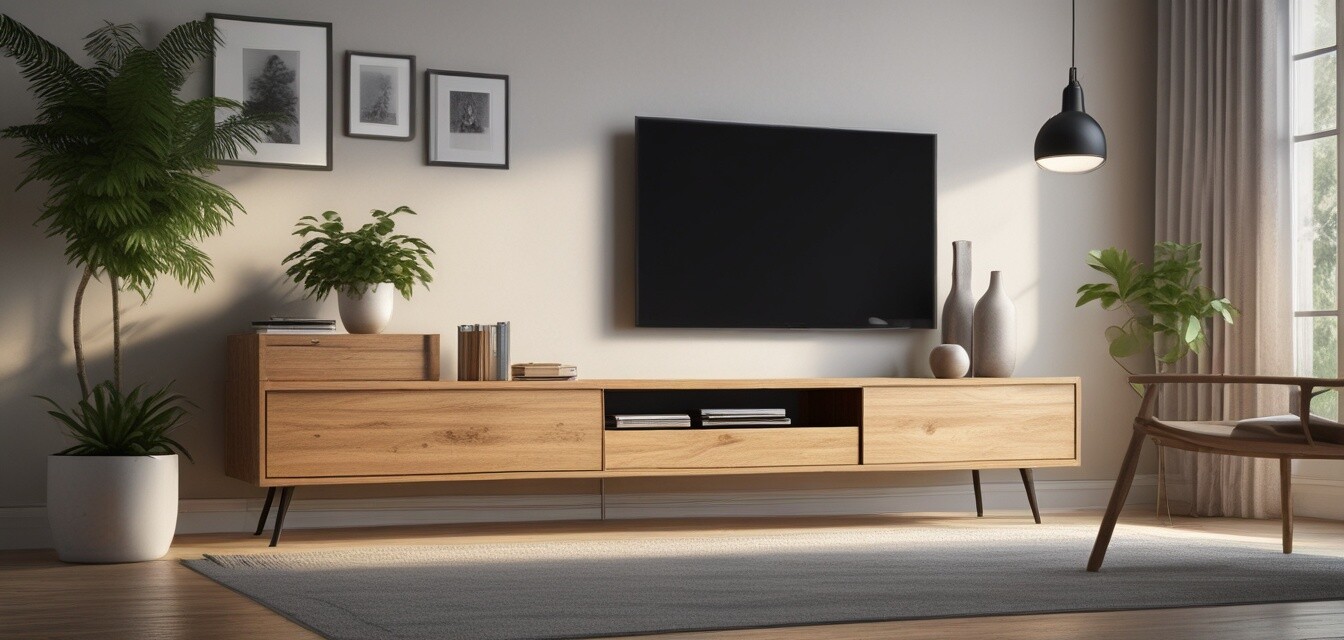
Sustainable Design Trends for 2026
- Emerging sustainable materials will dominate the furniture market.
- Personalization and modular designs are on the rise.
- The integration of technology into eco-friendly furniture is expected to evolve.
- Connection to nature through biophilic design becomes crucial.
- Consumer demand for transparency in sourcing and production processes will increase.
As we approach 2026, the evolution of sustainable design in furniture, particularly in TV stands, is becoming increasingly apparent. This article provides a glimpse into the anticipated trends that will shape the market, showcasing innovations that marry sustainability with function and aesthetics. Sustainable design is not just a trend; it’s an essential paradigm shift that reflects our growing awareness of the environment and sustainability.
Innovative Materials for Eco-Friendly TV Stands
The evolution of materials is one of the most exciting aspects of sustainable design. In 2026, we will likely see a significant shift towards materials that minimize harm to the environment. Here are some trending materials:
| Material | Description | Advantages |
|---|---|---|
| Reclaimed Wood | Wood that is repurposed from old structures. | Reduces waste and provides unique character. |
| Bamboo | A fast-growing grass that is highly renewable. | Strong, lightweight, and sustainable. |
| Recycled Metals | Metals that have been repurposed from old products. | Durable and reduces the need for new materials. |
| Eco-Friendly Laminates | Laminate surfaces made with low-impact methods. | Variety of designs while being environmentally friendly. |
Personalization and Modular Design
Consumers are increasingly seeking individuality in their homes. This trend is reflected in the rising demand for modular furniture that can be customized to fit specific needs and spaces. By 2026, we expect:
- Customizable Features: Options for consumers to modify features, colors, and dimensions of their TV stands.
- Assemble-Your-Own Kits: The popularity of DIY assembly kits that allow for easy customization and recycling.
You can explore more about modular TV stands here.
Integration of Technology in Sustainable Design
As technology continues to advance, so too does its integration into sustainable design. By 2026, we can expect to see:
- Smart Features: TV stands that come equipped with smart technology, enhancing user experience while maintaining eco-friendliness.
- Energy-Efficient Lighting: Built-in LED lighting to highlight design aspects while consuming less energy.
For more on the latest technology innovations in furniture, check our News and Trends section.
Biophilic Design: Connection to Nature
Biophilic design emphasizes the human connection to nature. Sustainable furniture designers in 2026 will focus on:
- Natural Aesthetics: Using organic shapes and forms that resemble natural elements.
- Indoor Plants: Incorporating plant spaces within furniture units.
| Design Element | Traditional Furniture | Sustainable Furniture |
|---|---|---|
| Material | Plastic, Non-Renewable | Reclaimed, Sustainable Materials |
| Functionality | Standard Design | Modular and Customizable |
| Connection to Nature | Zero Focus | Focus on Biophilic Elements |
Consumer Demand for Transparency
As sustainability becomes more mainstream, consumers are demanding transparency in sourcing. By 2026, brands that practice and promote:
- Sourcing Transparency: Clear information on where materials are sourced will become crucial.
- Production Practices: Detailed insights into the production process and its impact on the environment.
Learn more about sustainable practices in furniture manufacturing through our Eco-Friendly Living blog posts.
Conclusion
The sustainable design trends anticipated for 2026 emphasize innovation, functionality, and the aesthetic beauty of eco-friendly materials. With a strong focus on personal customization and technology integration, the future of sustainable furniture, particularly in TV stands, is promising.
Pros
- Enhanced environmental sustainability.
- Increased personalization and customization.
- Functional designs integrating technology.
- Natural aesthetics promoting wellness.
Cons
- Potentially higher initial costs for sustainable materials.
- Consumer awareness gaps may exist.
- Transitioning traditional furniture manufacturers may face challenges.